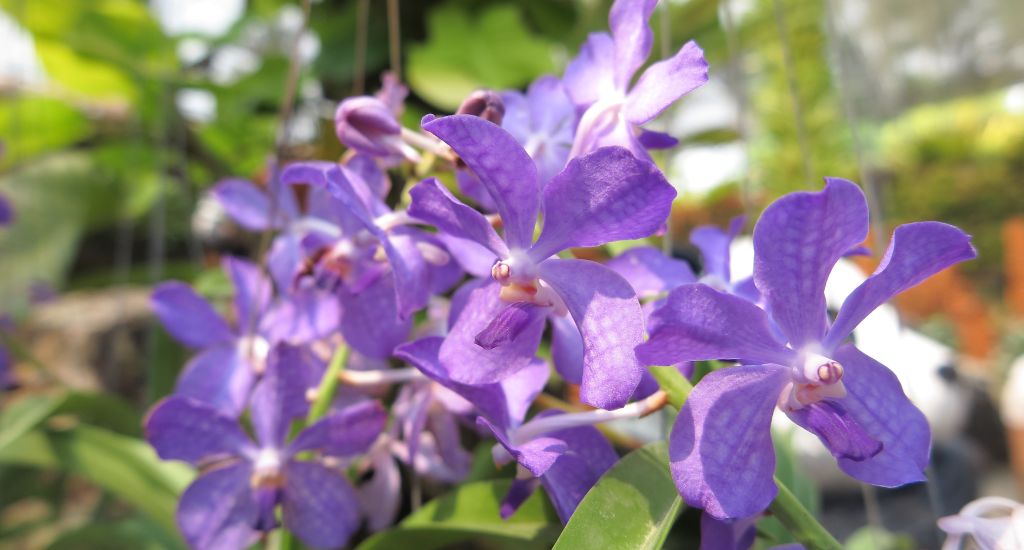
The disappearing wild orchids of North Bengal
Known for their beauty, fragrance and medicinal properties, epiphytic orchids found in the Dooars and Darjeeling hills are dying out because of deforestation in their natural habitat.

Known for their beauty, fragrance and medicinal properties, epiphytic orchids found in the Dooars and Darjeeling hills are dying out because of deforestation in their natural habitat.
People go to the Darjeeling hills to relax, sip tea and soak up the scenery. For some visitors, the main show is a spectacle that the forests yield – hundreds of wild orchids in bloom in a rainbow of colours and patterns among the ferns, bushes, tall trees and chirping birds.
Best known for its hillside tea gardens, the touristy region of north Bengal stretching from the Dooars foothills to the high Himalayas is home to more than 300 species of orchids.

The wild orchids, however, are dying off at an alarming rate and their plight is stirring calls for “rewilding” places where they thrived until driven out by habitat loss owing to illegal logging and development.
The most endangered are the epiphytic orchids – the type that grows on another plant/tree merely for physical support, drawing moisture and nutrients from the air, not from the host. These are not parasitic.
They need trees to survive and therein lies the problem. Environmentalists pick out land clearing for roads, farming and housing as key drivers of biodiversity loss. Some point to trees laden with orchids being felled to build a highway that rips through the forest.
The region faces a difficult choice of preserving the environment and promoting economic growth.
The death of orchids is a measure of how bad things are today for the ecosystem. Orchids are natural gauges of air quality because they don’t grow in polluted air. They draw pollinators like bees and other insects to their nectar and thereby help cross-pollination.
Also Read | West Bengal’s flower trade booms beyond state borders
Caterpillars thrive on shoots and roots of orchids – food that helps the next generation of insects to survive and grow.
Beyond the gloomy picture, there’s conservationist Ashis Kumar Roy holding the beacon of light.
About 20 years ago this botany teacher of a government school took up the task of saving the orchids by picking them from the wild and giving them a new home on trees with a thick trunk like the mango, jackfruit, teak, Shisham, and Sal.

Even the flower-bearing kadam and the lean but robust betelnut tree became orchid hosts.
Roy’s mission began at Kelabadi Tea Estate of Jalpaiguri and his experiment turned into a lifelong passion that led him to study the symbiotic relationship the indigenous people have with 13 varieties of orchids found in Bengal’s Dooars.
The Oraon and Kharia tribal communities depend on wild flora and fauna to make their own medicines and the wild orchids are used to treat a range of diseases – cuts and fractures, skin diseases, aches and pains, gastrointestinal acidity and so on, Roy said.
Also Read | Medicinal herb ushers prosperity for Sagar Island farmers
His study reaffirms a WHO report that says 80% of people on this planet depend on traditional remedies and epiphytic orchids add to the value chain of herbal healing. He collected data from 14 tea gardens for three years from 2018 and his research was published by the Orchid Society of India in 2022.
The forests are officially protected, but they are constantly under siege. The reality is becoming more apparent to more and more people. Roy had taught his students and community members how to save the orchids. Others put their skin in the game too.
“It’s not difficult to rehabilitate the epiphytic orchids, but there wasn’t enough awareness about their importance and value. To demonstrate the rehabilitation effort, three varieties were transplanted on 10 mango trees on my office premises,” said Jogesh Mandal, who met Roy during his posting as block development officer of Kharibari between 2017 and 2020.
Roy has been praised for his work and knowledge: the Bengal government’s Shiksha Ratna Award in 2021; and the Limca Book of Records featured his mission. But it’s more fulfilling to see people doing what he taught.

One of Roy’s students Arjun Biswas, 20, of Hatidoba village is studying for a diploma in engineering. He finds time to teach children of his village and a group of more than 40 friends the importance of orchids and how to replant them.
“Sometimes it takes six months for them to take root. I wait for the flowering season that extends for several months from March/April.”
Alpana Roy, another student, said only two of her transplants survived, though her teacher is convinced that over 95% replanted orchids make it. Alpana is waiting for the survivors to bloom.
Also Read | Biodiversity takes center stage in Odisha’s silent valley
Gosh, aren’t they beautiful? Take a look at just three reported in the IUCN Red List of Threatened Species 2018–2021.
The Bulbophyllum leopardinum, with its pale green and spotted red flowers simulate a leopard’s spots; the Dendrobium aphyllum carries pinkish violet, fragrant flowers; and Vanda tessellate is greenish with a very striking blue-purple lip.
The Vanda’s scent is a fusion of grape and lavender and the blooms are long-lasting. Indeed, orchid flowers can last for weeks.
The lead image shows orchid flowers (Photo by photowind, Shutterstock)
Usha Rai is a veteran journalist who has worked for the Times of India, Indian Express and Hindustan Times and mainstreamed development issues into news. She is recipient of the Chameli Devi award for outstanding women journalists.